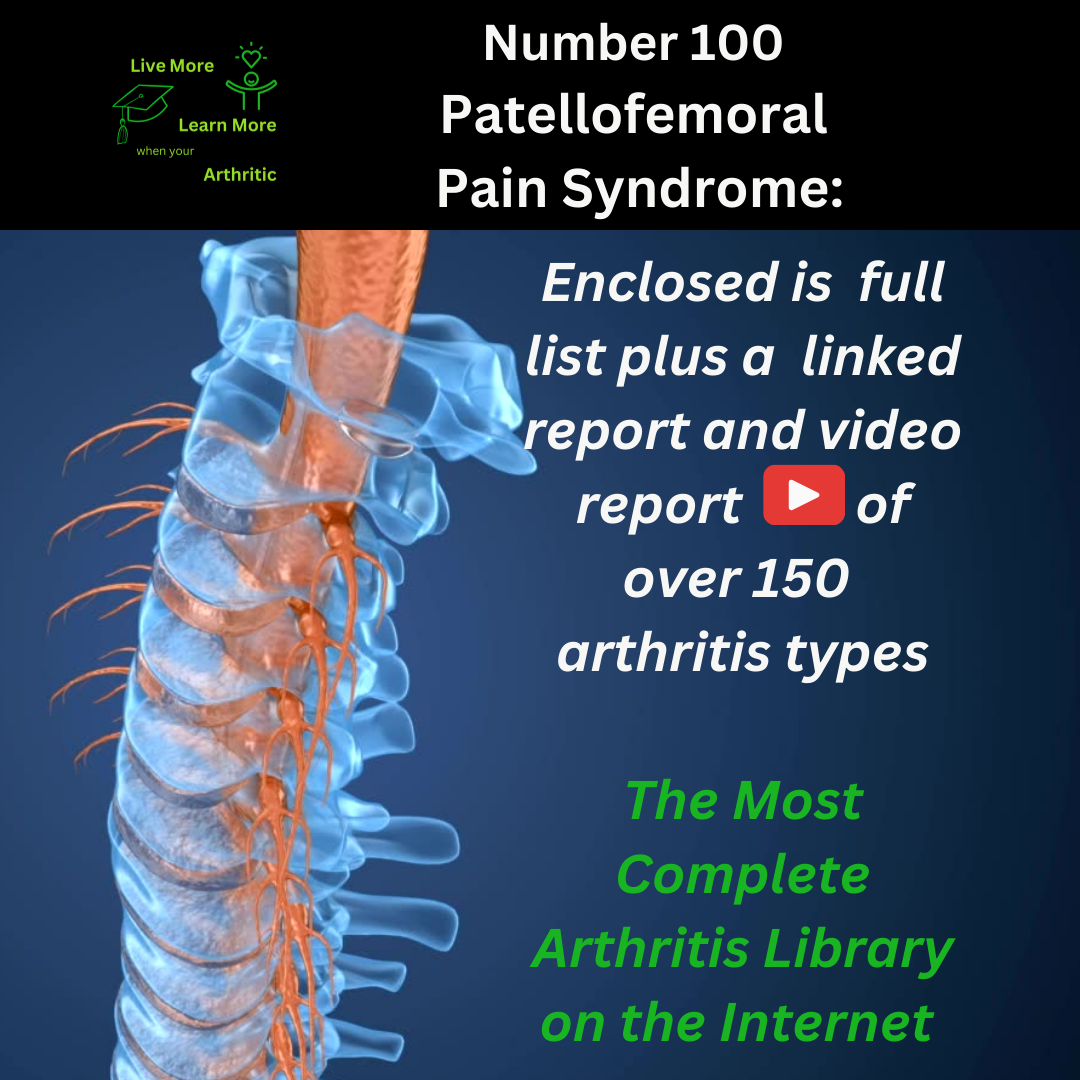
Patellofemoral Pain Syndrome: Number 100 of around 150 types of Arthritis
Exploring Patellofemoral Pain Syndrome: Understanding Knee Discomfort
Patellofemoral Pain Syndrome (PFPS) is a common knee condition that affects the patella (kneecap) and surrounding structures. It is characterized by pain around or behind the kneecap, particularly during activities that involve knee bending or impact. Let’s delve into the details of this condition and how it impacts individuals of all ages.
PFPS primarily affects the front of the knee, where the patella glides along the groove of the femur (thigh bone). Activities like running, squatting, or climbing stairs can exacerbate symptoms, causing pain, stiffness, and a sensation of grinding or popping in the knee joint.
Understanding Remission and Disease Description
Remission from PFPS is achievable with proper management. Rest, physical therapy, and targeted exercises can alleviate symptoms and prevent flare-ups. However, chronic cases may require ongoing maintenance to maintain comfort and mobility.
Causes and Triggers
The exact cause of PFPS is multifactorial and can include factors such as muscle imbalances, biomechanical issues (e.g., malalignment of the patella), overuse, or traumatic injury. Activities that place repetitive stress on the knee joint can trigger or exacerbate symptoms.
Impact on Range of Motion and Quality of Life
PFPS can lead to decreased range of motion in the knee joint, particularly during activities that involve bending or weight-bearing. Over time, untreated PFPS may limit mobility and impact daily activities, affecting overall quality of life.
Age of Onset and Gender Influence
PFPS commonly affects adolescents and young adults, particularly active individuals involved in sports or physical activities. While both genders can be affected, females are more prone due to differences in pelvic anatomy and muscle strength.
Complications and Interconnected Conditions
Untreated PFPS can lead to chronic knee pain and functional limitations. In severe cases, persistent inflammation and mechanical stress may contribute to early joint degeneration and osteoarthritis later in life.
Inflammation, Tenderness, and Cartilage Concerns
Inflammation and tenderness around the patella are hallmark symptoms of PFPS. Prolonged inflammation can contribute to cartilage wear and tear, potentially leading to joint damage if left untreated.
Proactive Management and Lifestyle Changes
A proactive approach to managing PFPS includes targeted exercises to strengthen the muscles around the knee, such as the quadriceps, hamstrings, and hip abductors. Additionally, modifying activities that exacerbate symptoms and incorporating proper warm-up and cool-down routines can reduce the risk of flare-ups.
Quality of Life and Long-Term Outlook
With proactive management, individuals with PFPS can achieve a higher quality of life by minimizing symptoms and maintaining joint function. Adhering to an exercise regimen that focuses on strengthening and flexibility can improve mobility and prevent recurrence of symptoms.
Possible Complications and Associated Risks
Complications of PFPS may include chronic pain, functional limitations, and reduced participation in physical activities. Early intervention and lifestyle modifications are key to preventing long-term complications and optimizing knee health.
 Awareness of Interconnected Conditions
Awareness of Interconnected Conditions
PFPS may coexist with other knee conditions such as patellar tendinitis, ligament injuries, or meniscal tears. Understanding these interconnected conditions can facilitate accurate diagnosis and comprehensive treatment plans.
In summary, Patellofemoral Pain Syndrome is a manageable knee condition that requires a multifaceted approach to treatment and prevention. By addressing muscle imbalances, modifying activities, and incorporating targeted exercises, individuals can regain control over their symptoms and lead an active, pain-free lifestyle.


